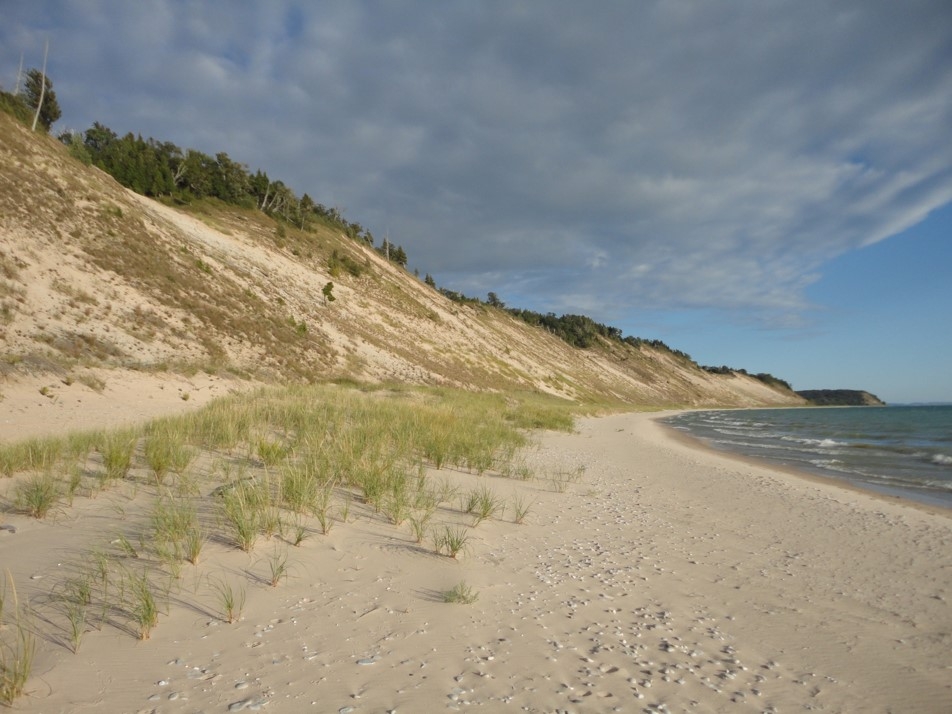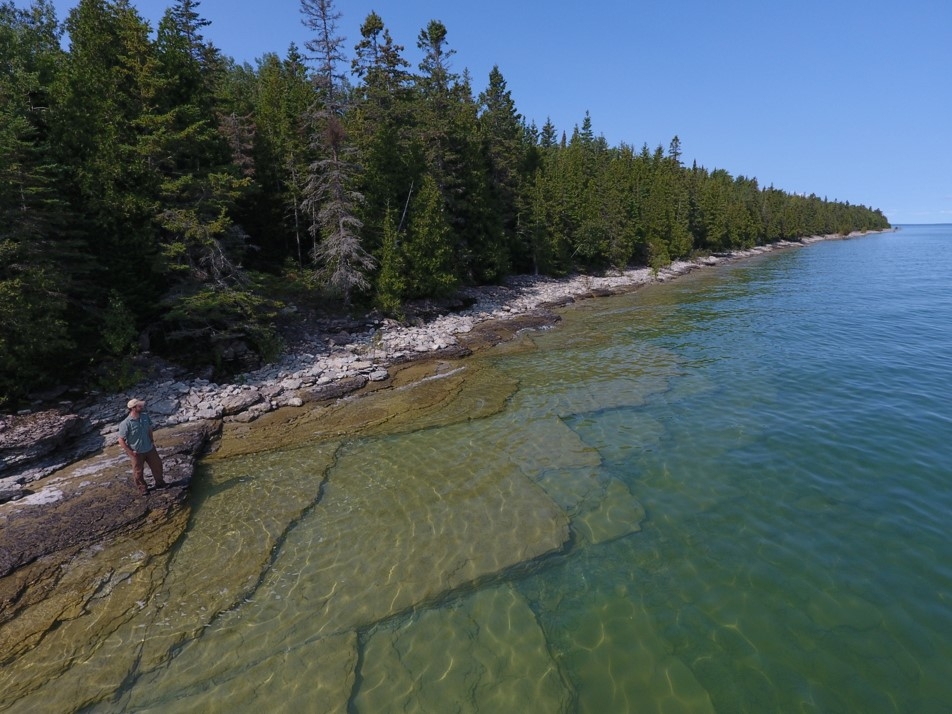Natural Community Distribution Maps

For each natural community type, we provide ecoregional and county distribution maps, which were first collated in "Distribution Maps of Michigan’s Natural Communities" (Albert et al. 2008). These distribution maps were derived from a combination of sources from statewide and regional surveys, literature review, and expert assessment. Specific sources critical to the production of these maps included the “Vegetation of Michigan circa 1800” (Comer et al. 1995), “Regional Landscape Ecosystems of Michigan, Minnesota, and Wisconsin” (Albert 1995), Geology of Michigan (Dorr and Eschman 1970), “Quaternary Geology of Michigan” (Farrand and Bell 1982), “Bedrock Geology of Michigan” (Reed and Daniels 1987), the three-volume collection Michigan Flora (Voss 1972, 1985, 1996), Field Manual of Michigan Flora (Voss and Reznicek 2012), and MNFI’s Biotics database (MNFI 2019). The circa 1800 vegetation map provides a hypothesis of the historical distribution of native vegetation across Michigan and was helpful in developing distribution maps for communities that today have limited distributions within Michigan, such as many of the prairie and savanna types. Maps of current distribution of natural community types were developed from the following: interpretation of the ecological factors that influence natural community distributions in Michigan, including climate, bedrock geology, landforms, soils, and natural disturbances; the collective field experience of MNFI Ecologists and Botanists; and data from documented natural community occurrences. Spatial records documenting the locations (occurrences) of high-quality natural communities are maintained within Michigan Natural Features Inventory’s Biotics database (MNFI 2019). This database is especially useful for determining the distribution of natural communities that are rare to critically imperiled, since survey efforts have focused on this subset of Michigan’s natural community types. For those natural community types for which specific plant species are strong indicators, plant distribution maps (Reznicek et al. 2011; Voss and Reznicek 2012; USDA 2013) were reviewed to corroborate natural community type distribution maps. Occurrences of rare species that are known to be characteristic of specific natural community types were also utilized.

For the maps on this online classification, the distribution of each natural community was assigned to one of three categories of abundance for each ecoregion or subsection of Michigan: prevalent or likely prevalent, infrequent or likely infrequent, and absent or likely absent. For most communities, the assigned categories apply to both current and historical distributions. However, for those communities that have been significantly reduced or eliminated from the landscape due to anthropogenic disturbance (e.g., prairies and savannas), these categories apply to historic distributions, and this caveat is noted on the individual distribution maps. Because the distribution maps are essentially hypotheses of the current or historic distributions of the natural community types, it is important to interpret the categories of abundance as follows: the category of “prevalent or likely prevalent” indicates that a community is likely common or was likely common within an ecoregion; the category of “infrequent or likely infrequent” indicates that a community is likely uncommon or was likely uncommon within an ecoregion; and the category of “absent or likely absent” is used to indicate that a community is unlikely to occur or was unlikely to occur within an ecoregion. We encourage users to provide us with information to improve these maps, which we continually update as our inventory efforts progress. To provide input on distribution of natural community types, please email mnfi@msu.edu.
County and Ecoregion Distribution Maps by Community Type
-
Alvar
-
Bog
-
Boreal Forest
-
Bur Oak Plains
-
Cave
-
Clay Bluffs
-
Coastal Fen
-
Coastal Plain Marsh
-
Dry Northern Forest
-
Dry Sand Prairie
-
Dry Southern Forest
-
Dry-Mesic Northern Forest
-
Dry-Mesic Prairie
-
Dry-Mesic Southern Forest
-
Emergent Marsh
-
Floodplain Forest
-
Granite Bedrock Glade
-
Granite Bedrock Lakeshore
-
Granite Cliff
-
Granite Lakeshore Cliff
-
Great Lakes Barrens
-
Great Lakes Marsh
-
Hardwood-Conifer Swamp
-
Hillside Prairie
-
Inland Salt Marsh
-
Interdunal Wetland
-
Intermittent Wetland
-
Inundated Shrub Swamp
-
Lakeplain Oak Openings
-
Lakeplain Wet Prairie
-
Lakeplain Wet-mesic Prairie
-
Limestone Bedrock Glade
-
Limestone Bedrock Lakeshore
-
Limestone Cliff
-
Limestone Cobble Shore
-
Limestone Lakeshore Cliff
-
Mesic Northern Forest
-
Mesic Prairie
-
Mesic Sand Prairie
-
Mesic Southern Forest
-
Muskeg
-
Northern Bald
-
Northern Fen
-
Northern Hardwood Swamp
-
Northern Shrub Thicket
-
Northern Wet Meadow
-
Oak Barrens
-
Oak Openings
-
Oak-Pine Barrens
-
Open Dunes
-
Patterned Fen
-
Pine Barrens
-
Poor Conifer Swamp
-
Poor Fen
-
Prairie Fen
-
Rich Conifer Swamp
-
Rich Tamarack Swamp
-
Sand and Gravel Beach
-
Sandstone Bedrock Lakeshore
-
Sandstone Cliff
-
Sandstone Cobble Shore
-
Sandstone Lakeshore Cliff
-
Sinkhole
-
Southern Hardwood Swamp
-
Southern Shrub-Carr
-
Southern Wet Meadow
-
Submergent Marsh
-
Volcanic Bedrock Glade
-
Volcanic Bedrock Lakeshore
-
Volcanic Cliff
-
Volcanic Cobble Shore
-
Volcanic Lakeshore Cliff
-
Wet Prairie
-
Wet-Mesic Flatwoods
-
Wet-Mesic Prairie
-
Wet-Mesic Sand Prairie
-
Wooded Dune and Swale Complex
Citation
Cohen, J.G., M.A. Kost, B.S. Slaughter, D.A. Albert, J.M. Lincoln, A.P. Kortenhoven, C.M. Wilton, H.D. Enander, and K.M. Korroch. 2020. Michigan Natural Community Classification [web application]. Michigan Natural Features Inventory, Michigan State University Extension, Lansing, Michigan. Available https://mnfi.anr.msu.edu/communities/classification. (Accessed: January 21, 2026).

